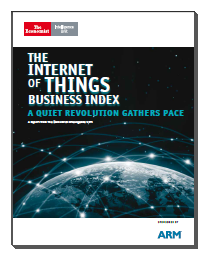The Industrial-Strength Real-Time Enterprise
For many years in business and industry there has been a gap between the top floor and the shop floor, between management and production, between the white collars and the blue collars. This gap has carried over in the approach to computing, where office systems crunch numbers in relational databases and churn out monthly reports, while production systems provide real time monitoring and control. Now, however, it seems that this gap may be closing. Visionaries are forecasting the coming of the real-time enterprise.
In a keynote address to the ISA Automation Week in Nashville, reported by Walt Boyes in Control Magazine, Dr. Peter Martin, Vice President of Invensys, said that one of the forces driving industry is a move from transactional business to real-time business. He also said that enterprises need to augment reporting-based systems with real-time performance measurement. And he predicted that the technology developed by industrial automation systems will drive that change.
Why is such change necessary? With their focus on historical analysis of data, office systems have always had the luxury of time. Software developers concentrated on building elaborate relations between disparate data sets, providing intricate and complex models of the enterprise. But these models were inevitably snapshots of the past. The recent past, true, but still the past. This is no longer sufficient to keep pace with the demands of business in the 21st century.
On the flip side, production systems never had time to spare. Developers of these systems had to find ways to collect, analyze, and interact with data in real time, to respond to changes in the system within seconds or even milliseconds, often with no human intervention. The data-handling capabilities of these systems typically included low latency as an integral part of the design. Here is a valuable resource that is only recently being discovered and brought into play in the upper echelons of the company.
In his talk, Martin summarized the situation in a simple chart. In the left column the CFO has access to monthly financial reports. On the right, the whole enterprise is managed based on these reports. But at the production level, the work needs to be managed on a daily basis, at least. And resources need real-time control. However, there is no corresponding real-time accounting taking place at either of these two lower levels.
Martin foresees this gap being filled sooner or later. Those who can use the real-time data coming from the factory floor will be able to run real-time analysis on it as it flows through their system. This live analysis will greatly empower and improve their resource control and production management.
As we see it, this new approach can be readily implemented using secure cloud services with real-time data handling capabilities. The approach calls for a way to connect the various production facilities, run real-time analytics on the data, and then stream the results to the people who need to make decisions, or indeed, to systems that are programmed to decide automatically. This is what a real-time cloud service can do.
Dr. Peter Martin says that automation is the key to a better world. He sees it solving big problems, even world hunger for example, as long as the gap between the top floor and the shop floor closes. “We cannot be plant-centric or enterprise-centric any more,” he said. “We need to measurably improve the profit of business. Technology and talent together define our future, and the future is very bright.”


 Automation technology is converging to the point where it is possible to host a single software development environment and runtime application on one control computer to provide multiple functionality over a single network.
Automation technology is converging to the point where it is possible to host a single software development environment and runtime application on one control computer to provide multiple functionality over a single network.
 The results are interesting, indeed surprising in some ways. Although we would expect the more “developed” countries to be more advanced in their ability to support cloud computing, “troubling obstacles emerge when you examine the lack of alignment in the legal and regulatory environments in many of those advanced countries,” according to the report. At the same time, the strong desire for ICT in advancing countries like China, India, and Brazil doesn’t necessarily make them ideal environments for cloud computing either. Each country has its own legal dynamic that plays out in unique ways.
The results are interesting, indeed surprising in some ways. Although we would expect the more “developed” countries to be more advanced in their ability to support cloud computing, “troubling obstacles emerge when you examine the lack of alignment in the legal and regulatory environments in many of those advanced countries,” according to the report. At the same time, the strong desire for ICT in advancing countries like China, India, and Brazil doesn’t necessarily make them ideal environments for cloud computing either. Each country has its own legal dynamic that plays out in unique ways.

